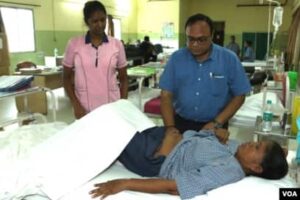According to top medical experts, a domestically produced vaccine that offers defense against cervical cancer—the second-most common type of cancer affecting women in the country—will be available to the majority of the population, including the poorest.
The largest vaccine company in the world, The Serum Institute of India (SII), makes the vaccine Cervavac. Adar Poonawalla, the chief executive of SII, stated in a statement on Tuesday that the vaccine injection is anticipated to go on sale by the end of this year.
Cervavac would enable India to control female mortality brought on by cervical cancer. In a few months, it will be added to the country’s [vaccination]program, according to Poonawalla.

The Human Papilloma Virus, the primary cause of cervical cancer and a possible cause of other malignancies, is prevented by the vaccine. It will cost between 200 and 400 rupees, or approximately $2.50 and $5, according to SSI, making it affordable for both men and women.
“The vaccine will be particularly helpful for girls aged 9 to 15 or women who are not yet sexually active,” said Dr. Smita Joshi, the study’s principal investigator.
If we immunize adolescent females now, the effect on reducing the burden of cancer in the country would be visible within three to four decades,” she said.
Joshi asserts that adult women require cervical cancer screenings, preferably along with an HPV test, as well as appropriate management for those who test positive for sexually transmitted HPV. This is because adult women have lower vaccine efficacy.
The least expensive of the three highly effective foreign-produced HPV vaccines, according to Dr. Mayoukh Kumar Chakraborty, assistant professor of gynecology and obstetrics at Kolkata’s KPC Medical College & Hospital, costs roughly $35 per dosage.
Since HPV vaccination was introduced in 2008, the national immunization program did not include it, the doctor explained.
According to a statement released by SII, the company is providing Cervavac for a lower cost in order to support its “philanthropic mindset” and safeguard disadvantaged children around the world.


